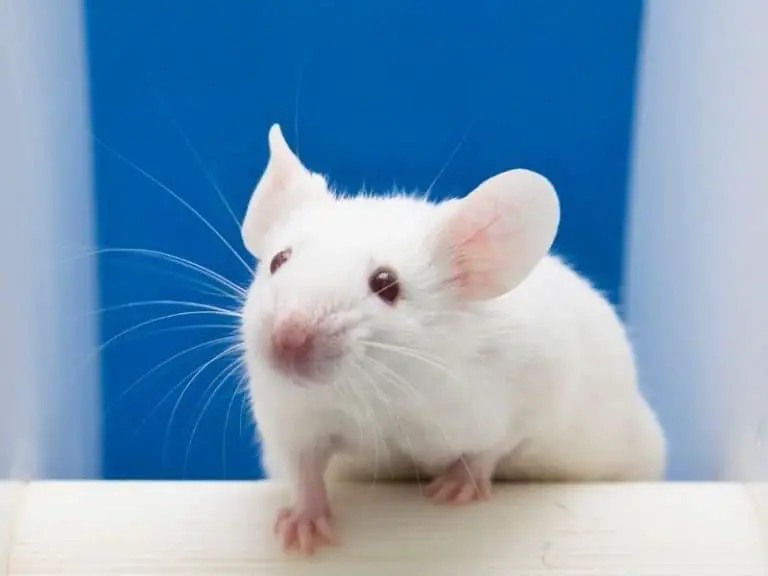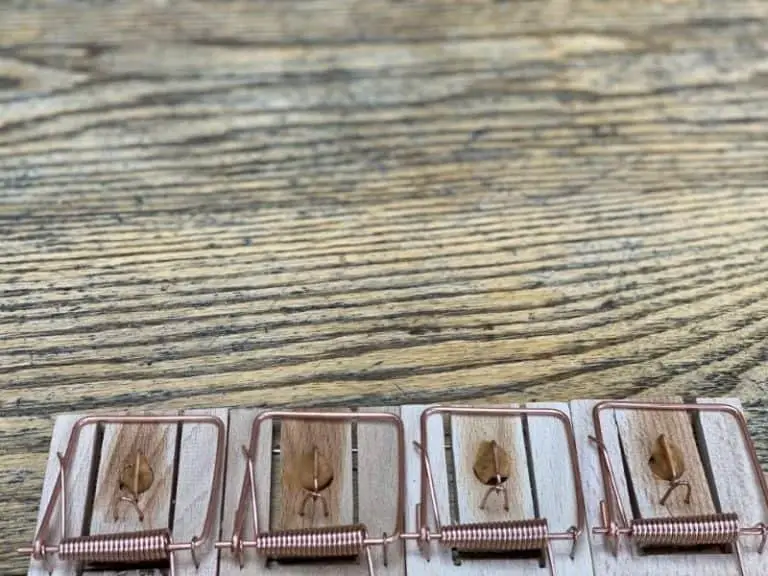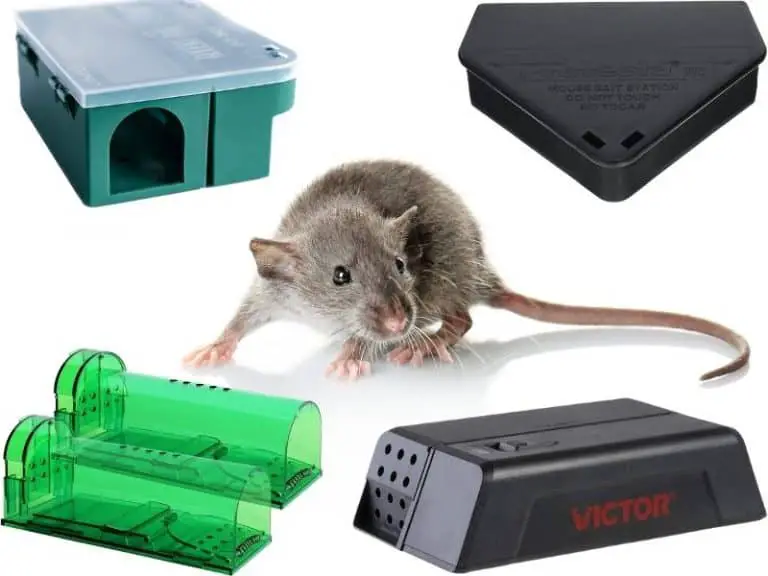How to Keep Mice Out From Under the Fridge
There is nothing worse than seeing the sight of mouse droppings near a fridge. When you see them, you might wonder: how do you keep mice out from under the fridge?
As warm-blooded animals, mice get attracted to the heat generated by refrigerators. Check voids under the fridge, such as the space behind the condensation drip pan and a motor compartment for mice nests. Set traps in those places. Keep mice away by sealing holes and other openings.
When you see mouse droppings in or near your refrigerator, do not panic.
Make sure that you have the right tools to guarantee that they would no longer be a nuisance that would cost you time, money, and energy.
Why Do Mice Prefer to Stay Under Your Fridge
Mice are warm-blooded creatures that prefer to stay in places where they can find warmth, shelter, and food.
Places like behind or under the fridge are excellent habitats for mice at home because refrigerators generate warmth through their radiators and they can store nesting material underneath
Refrigerators generate heat by moving heat energy from one place to another, thus generating the optimal temperature of 40 degrees Fahrenheit (4 degrees Celsius).
The warmth that is especially found in the radiator can potentially heat your kitchen, but not by much. Radiators generate this heat and make it more attractive to mice.
Refrigerators also have insulating material that are useful for hiding mice nests. Nests are mostly made out of paper, cloth, and other shredded material.
It is possible for mice to gnaw through and chew through insulation and foam to find possible shelter. Nevertheless, the goal they have is to find a place to hide in order to breed and nest mice properly.
What Damage Can Mice Cause to Your Fridge
Mice can cause damage to at least two things in your fridge.
The first is the insulation that is primarily located around and underneath your fridge.
The second is the electrical or other wiring found in the refrigerator’s housing. The damage they cause will make your fridge less efficient in keeping heat out and make the fridge not working properly—or worse.
Insulation protects refrigerators from radiating cold air from inside your fridge and facilitates the process of generating heat energy through the fridge’s radiator.
Mice can potentially damage insulation by gnawing into it with their sharp teeth. If left unchecked, certain types of insulation such as foam can be damaged to the point that it can leak the cold.
However, what is worse is the damage that mice can cause electrical wiring insulation and the wires themselves.
Mice are able to gnaw through wires and their insulation, damaging them and in some cases preventing the fridge from working. Damaged electrical wiring can also generate a spark or arc that serves as a “trigger” for fires.
Apart from the damage they cause, mice can carry diseases like the hantavirus and can cause food poisoning when they gnaw into food sources. This is another reason why mice should not be inside your home at all.
Steps to Get Rid of Mice Under Your Fridge

Now that you know about the damage mice can cause under your fridge, how do you keep mice out from under your fridge?
How do you keep them from coming back to find a place to stay or even cause damage to this vital kitchen appliance?
There are tell-tale signs that mice have invaded your fridge.
Among these are mice droppings, which are short and brown in color, though darkening can indicate how long they have been there.
The other is the odor generated by mouse urine, which can potentially be strong. It is the smell of ammonia, or of stale urine.
When you have discovered that mice are under your fridge, these steps are useful in getting rid of mice and making sure that they do not come back.
Remember, when you are aware that mice are under the fridge, don’t panic. This is important because, as you will find out, getting rid of mice requires time and patience, and even strategic thinking.
Use Traps and Bait
Because mice wander from their shelter or nest to find food and other material for nesting, there is ample opportunity to lay down different kinds of traps and bait for mice.
These traps and bait have the effect of reducing the mouse population beneath your fridge and even elsewhere in your home.
There are three kinds of traps that are useful and work in various ways.
Snap traps kill mice by snapping their spinal cords and causing a quick death.
Glue traps kill mice by forcing them to struggle their way out of the trap, thus causing injury that can potentially be lethal. Live traps entrap mice and allow them to be physically removed from the house.
Food bait can be used in conjunction with different kinds of traps. These include nuts and seeds, chocolate, oats, soft smelly cheese, and small candies such as gum drops.
The most effective of these food bait is peanut butter, which combines three things that mice love to feed upon: fats, sugars, and nuts. The key is how to use them properly.
Bait stations use different kind of poisons that work with mice.
Laying traps and bait stations down in spots near or around the fridge is important, so lay them down along walls and other possible mouse paths.
The important thing is to bait the area first, so when they are used to the bait, bait stations and traps can be installed next.
Find Out Where Mice May Be Hiding
You may use the opportunity to defrost your fridge to find out where mice may be hiding beneath your fridge.
It is likely that you may find them behind your condensation drip pan, where water drips onto the tray to provide liquid nourishment to mice. They may also be in the fridge’s motor compartment.
The basic thing to note is that the two spaces we just mentioned are voids beneath the fridge. Just as mice prefer to stay in voids between walls and under ceilings, these voids provide room for mice to nest and live nearby.
Carefully move the fridge and, with the help of a flashlight, look beneath and behind the fridge to find out where mice may be staying.
You may find signs of mice activity such as nests, droppings, and urine (which you can tell by the smell). If you are lucky, you may actually find mice staying there that are either dead or alive.
Clean Out Nesting Material And Mice Droppings
This step is straightforward, but requires some work to carry out. There are preparations you must do to do this properly.
The first is to prepare a mixture that will disinfect the nest and any mouse remains you may find, including droppings and dead mice. The best formula is nine parts water to one part liquid bleach.
The second is to wear gloves and a mask.
When you see mouse droppings, disinfect the area where droppings are found. With a paper towel, carefully remove the droppings and place them in a garbage bag.
Disinfect the inside of the bag, seal it, and place it inside another bag. Remove the bag from the garbage as quickly as you can. Then clean and disinfect the area again.
Remember: never use a vacuum cleaner or a broom to get rid of mouse droppings. These can release particles that potentially carry disease into the air.
Dead mice require the same treatment.
Disinfect the body and the surrounding area, remove the mouse corpse into a garbage bag with a paper towel, seal the bag and place it inside another bag. Dispose immediately and disinfect and clean the area again.
Remove nests and nesting material from the void where you may have found them. Live mice can be trapped in a jar with food bait and removed to a distant place.
Remember to pour disinfectant over the nest and nesting material and use a paper towel to remove these items into a garbage bag, which in turn is sealed and placed into another bag.
When you are done with removing nests, nesting material, and other mouse remains, wash your gloved hands, dispose of the gloves immediately, and wash your hands with soap and water for at least 20 seconds.
Seal All Holes and Possible Entrances
Mice can fit into small holes which are roughly the size of a dime. This makes it very important to seal all possible entry points into your kitchen and fridge.
The first step is to identify any potential holes where mice can fit, and prepare your material for sealing.
There are at least two approaches we can talk about here: using sealing foam and using steel wool.
Steel wool is a good way to plug holes behind the fridge. Using gloves or a pencil, insert a cut-out piece of steel wool in the holes, making sure to stuff them carefully into the hole or gap.
Steel wool is a good deterrent because mice will find it difficult and tedious to chew through the steel. The other advantage is that it is a good insulator.
Sealing foam insulation is another useful measure to keep rats out. Following package directions, apply the sealing foam to any holes and gaps you may find.
Where can you find holes and gaps in your kitchen?
The most obvious locations would be holes where plumbing passes through to your sink, holes for electric and gas conduits, and behind your kitchen cabinets or cupboards.
Clean Out Your Kitchen and Repair Any Damage
The best deterrent against future mice activity is to keep your kitchen clean and repair any leaks in your plumbing system.
What this entails is preventing mice from finding loose sources of food that will help them to survive, and to give them a chance to find liquid nourishment.
One way of keeping your kitchen clean is to immediately wash out any dishes with traces of food and place them in the dishwasher as soon as you can.
Clean countertops where you have prepared food so that there are no traces of it that may be attractive to mice. Make sure you do not have any loose food in your cupboard or on the kitchen counter.
Repairing leaks in your plumbing is also important.
Mice rely on dripping water for their water supply. In the case of fridges, dripping water is unavoidable because of the condensation that happens underneath the fridge.
Whenever possible, defrost your fridge and try to get rid of excess water that accumulates beneath it to prevent mice from finding nourishment.
One final step is to repair or replace any wiring or insulation which mice may have damaged. Refrigerator insulation replacement kits are available from most appliance supply outlets online.
Repairing wires may involve using duct tape or, in extreme cases, the services of an electrician or other such professional.
Use Airtight Food Containers
This is a step that is related to the previous one.
Loose food items or items that are in containers that are not rodent-proof are particularly vulnerable to mouse attacks.
The important thing here is to protect your food from mouse infestation because of the potential risk of food poisoning for which mice are vectors or carriers of bacteria that cause it.
If your food item is in cardboard boxes or paper containers, or even in thin foil or plastic wrapping, they are particularly vulnerable to mouse attacks.
Buy thick plastic containers with an airtight seal to store these food items. Make sure to seal the items so that they would not be attractive to mice.
Places behind cupboards or cabinets should be sealed, as previously mentioned, and paths to cupboards and cabinets should be laid out with traps or bait stations. The only loose food you should allow is food bait, which will attract mice to traps.
If a mouse infestation is quite serious and measures to trap and kill mice do not effectively reduce their number, it may be time to call in a pest control professional.
They have the tools, knowledge, and skills to get rid of mice and prevent them from entering your home again. Take the steps we described and only call them in as a last resort.
Tools in Clearing and Preventing Mice Infestations

In catching mice under the fridge and getting rid of them, you have several tools to take care of the problem.
These tools are useful in solving the problem in the different steps we just described. Making sure that you have these tools at hand will be important in taking care that you won’t find things like mice droppings near your fridge again.
This is just a short list of the tools we find most important.
We did not include things such as safety equipment (such as gloves or masks), auxiliary items such as spray bottles, or other preventive items such as airtight rodent-proof plastic containers.
We also did not include peppermint oil, which is a popular and most harmless way to deter mice.
Use them with caution and care.
Follow package directions and take safety precautions as recommended. Be sure to be thorough in using them, especially disinfectant, as these will help prevent mouse borne diseases.
Traps and Bait Stations
We mentioned earlier about the three kinds of traps that are commonly used to catch mice.
Snap and glue traps kill mice, and live traps entrap mice for possible removal. This online supplier of mouse traps also sells traps that use electric shock to kill mice. Mousetraps are usually baited with food, something which we discussed earlier as well.
Bait stations are another story.
These rely upon bait that is often food-grade, usually made from grain, and laced with rodenticide.
The type of rodenticide will determine whether mice have to eat multiple doses of the bait to die or to just have one dose and die within days. Good bait stations on the market prevent pets and children from taking the bait.
Having good bait stations or traps is not worth it if you don’t think like a mouse. Laying down traps and bait stations requires an understanding of mouse behavior.
Being creatures of habit, mice tend to pass the same paths to and from your fridge, and planting traps and bait stations in corners or where mice gather may help.
Disinfectant
When you are mostly done with entrapping or killing mice that live under your fridge, the next thing to do is to clean up.
The crucial materials here are safety items such as gloves and masks, paper towels to pick up the remains, and garbage bags to dispose of them. However, the most important item here is a liquid disinfectant.
There are two varieties of disinfectant recommended by experts.
The first kind, which is useful when you have it, involves mixing a solution of liquid bleach and water in such a way that you have nine parts of water to one part bleach. You do not need to have too much bleach for this to work.
The second kind is a common household disinfectant.
Many of the household disinfectants sold online also serve as cleaners, making them useful for disinfecting mice droppings, dead mice, or mice remains and for cleaning up after them as well. Use according to package directions as much as possible.
Sealing Foam Insulation
Sealing foam insulation serves two purposes.
They are meant to prevent rats from entering small holes and gaps in walls where electrical conduits and plumbing pass through on the way to your fridge. They also serve as additional insulation against excess temperatures.
These sealing foam products sold online are specifically marketed for use against mice.
It is worth noting that some of these products contain rodenticides that deter mice from chewing on the foam and possibly kill them as well.
Check the product label to see if this additional measure is part of the product.
The best way to use these foam products is to use them according to package directions, as with any other product that contains potentially harmful substances.
If you are in doubt as to how to use them, consult sites that have tips on how to use sealing foam. Using sealing foam properly will help keep mice not only from under your fridge but also from your kitchen and home.
Related Article: How To Get Rid Of Mice In Kitchen Cabinets
Photo credit: ©canva.com/elnuramikishiyev, ©canva.com/andreypopov, ©canva.com/freedommaster
Medical Disclaimer: TheHomePestControl is a digital publisher and does not offer personal health or medical advice. The contents of this website are not intended to substitute for professional medical advice, diagnosis, or treatment.
Affiliate Disclaimer: As an Amazon Associate, I earn from qualifying purchases made on our website. If you make a purchase through links from this website, I may earn a commission at no additional cost to you.






